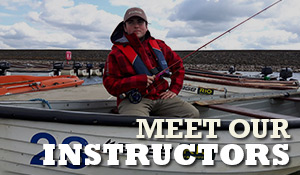After the first lockdown there has been a huge increase in rod licence sales with more than 100,000 more licences recorded than the previous year. These extra sales saw a number of anglers arriving at all our waters to have casting lessons or “have a go sessions.” With the start of the season looming this blog is aimed at giving these new anglers some advice on how to best approach this new season to make the most of what can be prolific early season fishing.
Our group of three midland fisheries are due to open early spring, the lengthening March daylight hours providing excellent early season sport, visit our websites for specific opening dates
www.flyfishdraycote.co.uk www.flyfishthornton.co.uk www.flyfisheyebrook.co.uk
There are a number of reasons the start of the season is such a good time for beginners to get on the banks.
- After a long winter closed period the start of the season is always a popular time due to the fisheries being heavily stocked with thousands of trout for the angler to catch. These trout have been introduced in the weeks leading up to the fisheries opening day allowing them to spread around the lake, ready to intercept the visiting anglers fly!
- Early season is perfect for beginners & the more advanced angler as the trout, due to the cooler springtime water temperature move closer to the bank to feed. The advantage of this, you will not need to cast as far to have a chance of getting your fly in front of a feeding fish and no need for a boat. Perfect if your new to the sport and just getting to grips with the challenges that casting a fly rod can bring.
Now let us turn our attention at some points to think about when you start your search to locate the trout. As previously mentioned, the fish like to hug the banks, the main reason for this is their searching for food. The trout are looking for food in the shallow margins because they warm up first, resulting in more food hatching off in the shallows. This therefore draws the trout into the area. The trout will also often shoal at this time of year, resulting, in there often being more than one. Once they have been located and the correct feeding depth found, and one is caught it is likely there will be chances of more fish without having to move at all.
A key point, is to keep on the move as the fish maybe shoaled only patrolling a small bank area if they have found food, a comfortable depth and water temperature, they will be very reluctant to move. Spend about 10 mins to 20 min in a spot maybe make a fly change, and if you have no luck simply move up the bank a few yards.
THORNTON
Fishing Thornton is easier from the boats but early season February to April does produce good bank sport. The early season hotspot are the shallows of the Thornton arm opposite the lodge, corner of the wood and down past the Lonesome pine. The area opposite the lodge & corner of the wood has a shallow natural gradient for the first few yards before dropping off, a perfect place for the fish to cruise along patrolling for food, we recommend anglers fish the shallows outwards with bank anglers benefitting if they wear waders.
The Bank Opposite the lodge.


The Corner wood looking across to the Dam.
The Lonesome pine bank down the Markfield arm has deeper water closer to the bank, careful wading is required here. Early season cat’s whisker, black & green tadpole & boobies will take fish but as we move towards mid to late March the diawl bach, bloodworm and buzzer patterns will take fish. Always call the lodge for latest updates 01530 230807

The Lonesome Pine.
EYEBROOK
At Eyebrook the early season hotspots are the Casting Platforms, Hawthorns & Sam’s Dyke. However the fish can be caught along the entire length of the Leicester Bank from Dogwood Bay down to Sam’s Dyke. Again there is a nice shallow gradient bank with a drop off not far from the shore newly stocked trout to patrol and feed in. Eyebrook is full of natural food so the fish soon switch onto the natural food once stocked. Meaning that natural patterns such as buzzers, Hare’s ear nymphs and pheasant tail nymphs work well in size 12 -14 maybe a little earlier than at the other fisheries.

The Casting Platforms.

The Hawthorns

DRAYCOTE
At Draycote a popular early season spot is Toft & The Cornfield, again with depths of about 8-10ft not far from the bank, with the fish cruising just on the drop offs.


The Swan’s Nest


The Cornfield
When it comes to tactics and tackle for early season fishing, it can be kept simple. A balanced outfit is key to good casting with a rod working nicely with a balanced fly line.
Everyone has an opinion on the best length of rod a beginner should use for Stillwater fishing. A 10ft or 9ft 6in #7 is a perfect bank rod with a medium/fast action, which is more forgiving when learning. However, if you are struggling to get to grips with a longer rod a 9ft rated for a #7 is a great option and easier on the wrist and shoulders. There are plenty of rods Vision, Greys, Shakespeare in the £70 to £150 price bracket for you to choose from, at Draycote, Eyebrook & Thornton we offer you the opportunity to cast a rod to make sure that you can choose the correct length and line weight to suit you.
When this is teamed with an easy casting, reasonably prices fly line such as a RIO Mainstream #7 £39.99 or a Vision Attack £29.99, good casting distances can be achieved. To start with only a floating line should be needed , as you can fish deeper with a weighted fly using a slow retrieve if needed. Remember at this time of year you are expecting the fish to be in the shallow margins, meaning sinking line could just result in catching the bottom. Next you will need a fly reel to store your new fly line on, again like rods there is a wide range available. One of the most popular options is the Greys GTS 500 reel £54.99, a cassette system that comes with 3 spare spools perfect for later down the line when building up your range of fly lines later. With other good options being the Vision Fisu £79.99 and the Greys GX300 £39.99.
After a rod, reel and fly line you may need to purchase a small tackle bag to carry your your terminal tackle such as a leader sometimes referred to as tippet a 9ft to 12ft length of nylon, or fluorocarbon to which you tie your fly. flies, priest, forceps & bass bag. Carrying them in a bag allows you to keep all the small bits of gear you need close to hand and remain mobile. Popular options are the Snowbee XS Bank Bag £76.99 
Alternately the Wychwood Bankman bag £99.99 are both extremely popular.

To successfully fish the bank waders will give you the option of getting further out into the water if needed, however, always start fishing from bank as you can often just push the fish out by wading straight in. Good options for waders are the Snowbee Granite PVC wader £49.99

Or the Vision Atom breathable waders £169.99.

Finally you will require a net to help land your prize catch. The Snowbee Ranger starts from £27.99 is a great option, as it folds and can go on the back of a jacket and also extends to a longer reach if needed.

As previously mentioned, the fish are inquisitive at this time of year and are yet to fully get to grips with their new surroundings. This means fly patterns with flash, and movement will often trigger a response. Fly such as a hot head damsel, Humungous & other long tailed lures work very well (pictured below) The marabou tail imparts movement that the fish cannot resist. More nymph style patterns can also work if you are getting lots of pulls, such as a green pea or Montana.

The patterns pictured below are a great place to start early season with the patterns on the left being the long tailed lures that will interest the fish and trigger an aggressive response. With the small green pea to the right is a great early season colour combination that has just the right amount of movement with the small marabou tail while still imitating small food forms such as tadpoles.
In early season its best to keep the leader simple using a single fly on a 9-11ft leader. Which could either be a tapered leader something like the RIO Powerflex 9-12ft tapered leaders starting at £5.99. This would aid with turnover and the transfer or energy in the cast.

Alternatively a length of standard fluorocarbon or monofilament, can be a good option if you are getting tangles as it works out cheaper per leader. As a spool of fluorocarbon start at around £9.99 or monofilament £4.99. The difference being fluorocarbon naturally sinks and in invisible in water, therefore making it the more popular choice for early season work. Mix the retrieve up from long pulls, figure of eights and short sharp pulls. Keep mixing it up as the fish will see a lot of flies and retrieves over this period. However my advice, is if you find your getting in tangles frequently speak to the staff at the lodge they can check your casting and kit
I hope that these pointers on areas, flies, tackle and retrieves encourage you new anglers out on to the bank at the start of this coming season.
If you require any more advice on Draycote or would like some casting tuition, please give me, Tom Bird a call on 01788 812018. Alternatively call:-
Jim Wright a call at Eyebrook on 01536 770264
Ifor Jones a call at Thornton 01530 230807
Tightlines Tom Bird



































